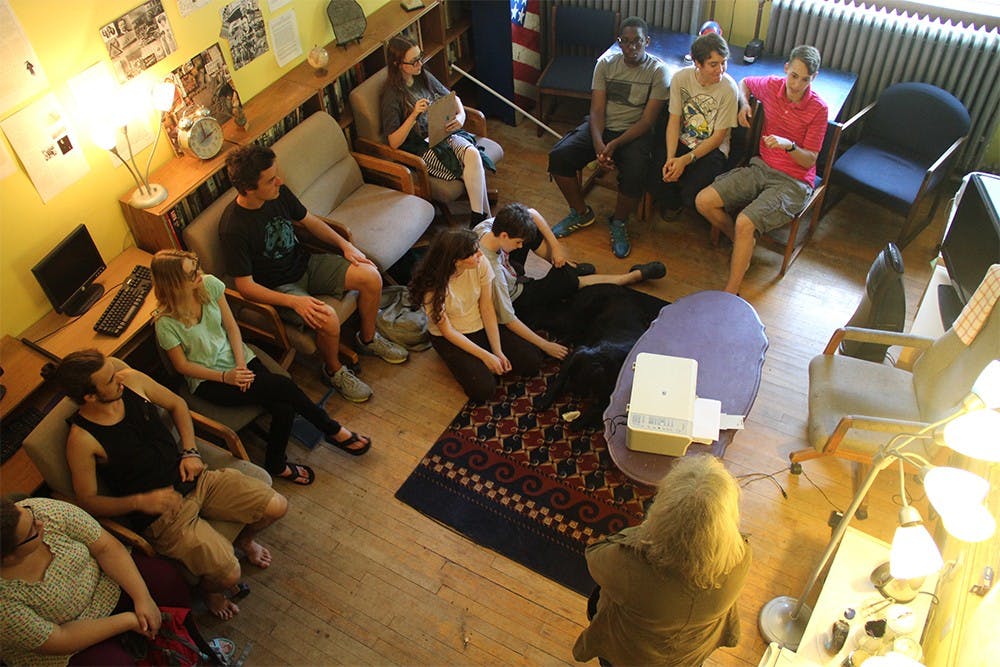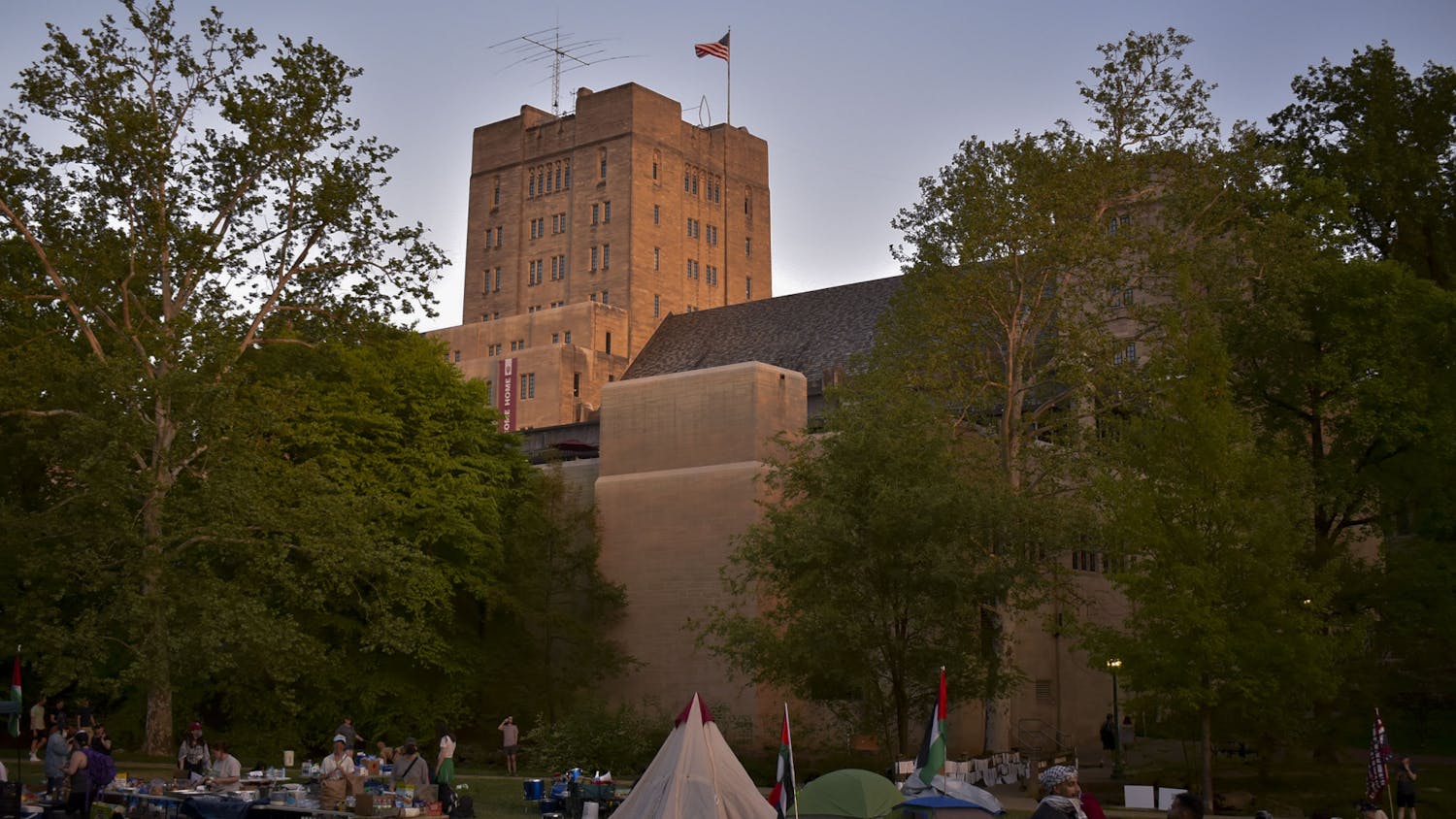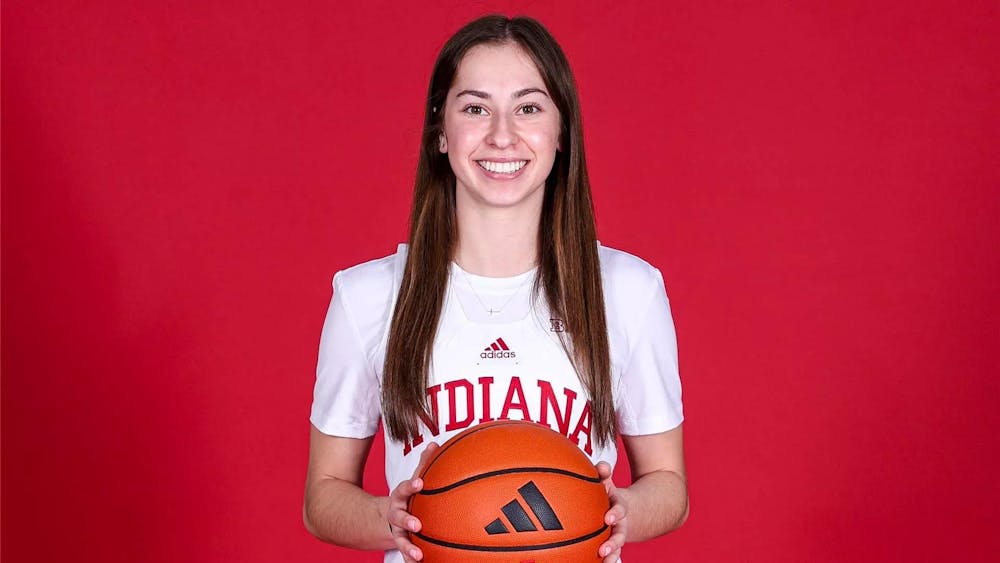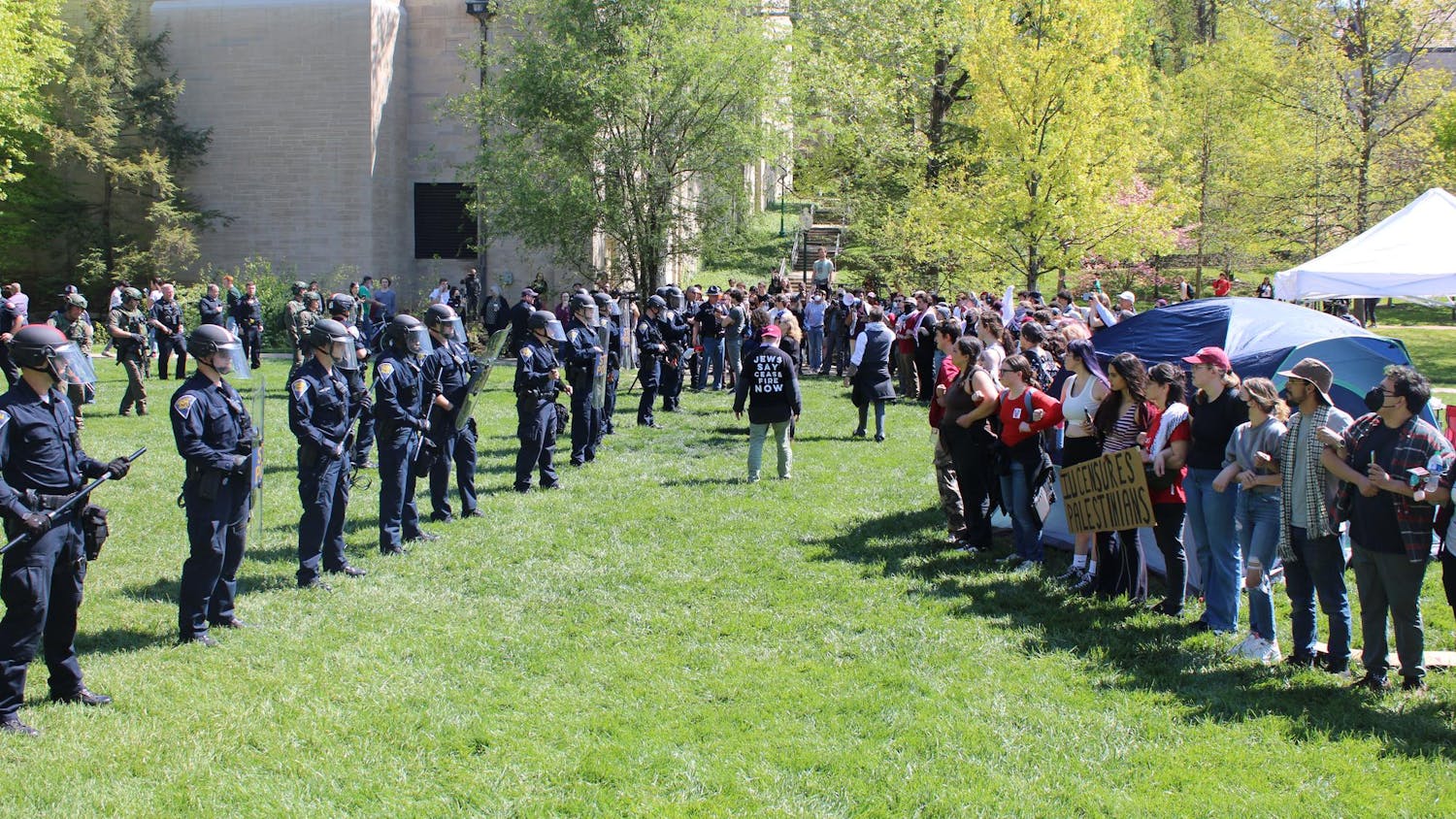She said she remembered it being a gorgeous morning when she heard the radio broadcast announcing the event that would change the course of United States history, the very subject she was just learning to teach.
When Murphey walked into school, everyone was staring at a television that had been pulled into the hallway. She said they watched the first tower crumble, seemingly out of nowhere.
***
Because Murphey was the social studies teacher, the shocked and scared faces turned to her for what to do next.
She told them they had a choice.
“We can either call your parents and all go home, which gives the terrorists exactly what they want,” she said, understanding the motive from years of journalism. “Or we can all stay here and find out who these people are and how this happened.”
In the unconventional style the school is known for, the children voted instead of the teachers. They chose to stay.
Murphey, who had taught only one day in her life, decided her former profession was more suited for a situation like this. With the help of her high school students, she transformed a classroom into a newsroom.
“It gave them objective distance,” she said. “It kind of removed the personal. There were kids asking, ‘Where’s my mom?’ ‘Where’s my dad?’ Putting them in a role where they had to calm down and figure out what was going on was exactly what they needed at the time.”
Together they looked at maps, trying to predict where a plane might hit next. They wondered whether Sears Tower would be a target.
Though Murphey would never broadcast the findings of their investigation on international radio, she said their reporting that day felt much more important.
“With broadcast journalism, you send it out into the ether, and people remember it maybe for a day and then it’s gone and you’re onto the next,” she said. “This was much more long-lasting in terms of its impact. I really saw these kids trying to work this out, trying to understand what it meant for them.”
***
Today those high school students are grown and gone. When Murphey asks her current class about the day, their answers reflect the distance and disconnect that America’s youngest generation feels.
“It was something that happened before I was born.”
“It’s kind of sad because it’s my earliest memory.”
“Some people think it’s a conspiracy.”
“It was like Pearl Harbor part two.”
Many of the younger students don’t even realize the date is significant.
“A historical event? I’m only ten,” one girl said, bewildered as to why she would know such an outdated story.
For years the Harmony teachers did activities to remember the day. They would have students draw pictures and talk about their feelings and build miniature, commemorative trade centers out of index cards.
Now, they discuss the 9/11 attacks much like any other piece of history. Teachers said they wanted their students to understand they shouldn’t play the blame game, that it was an event that changed the world, and that it’s not just about a date but real people and families.
“It was 14 years ago,” Murphey said. “To me, it always reminds me that Paul McCartney is 75 years old and there are people who haven’t even heard of the Beatles.”
Murphey said she still strives to express the day’s lasting significance to kids who will never know what it’s like to watch television in school hallways, or build newsrooms in classrooms or make a choice to stay in school and not give the terrorists what they want.






